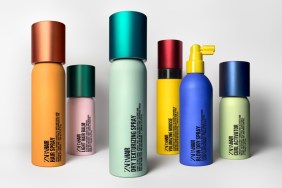How long did your last favorite swimsuit last? We don’t mean how long you wore it for because we’ve all slipped on a stretched out, faded piece from time to time, hoping no one notices the tiny elastic threads poking out everywhere. No, how long were you able to wear it before it started going downhill? Most swimsuits, even the high-end ones, give us a solid summer of wear, hopefully two.
The way we treat our suits has a lot to do with how long they last. Arguably, it determines longevity more than the fabric and definitely more than the brand label attached to it. Did you know that swimwear require specific, special care? And that it’s not difficult to treat them right so they keep their shape and color? Fear not because we’ve got the definitive guide to care for swimwear, whether they’re a retro one-piece or a tiny string bikini.
Check the Label
Like any other garment, you should always look at the care label of your suit. If it has embellishments of any kind, it’ll say to hand wash it. Most suits have hand wash instructions, while a few suggest washing in the gentle cycle after every fourth or fifth use. We’ll give you specific instructions in a minute, but know that suits need to be handled with care.
Prep the Suit Before Wearing
Swimsuit colors tend to bleed. To prevent this, soak your suit for 30 minutes in a bath of cool water and vinegar. Use one tablespoon of vinegar to one quart of water. You need only do this before you wear it for the first time, and it’s best to do it at least a full day beforehand so the suit has time to properly dry. On each day of wearing afterward, it’s actually best to rinse your suit with cool water before you take a dip in the pool, which helps it resist damage from chlorine. Most locker rooms at swimming pools have showers with signs that actually say to rinse off before you get in.
Prep Yourself Before Wearing
If you hit the shower before slipping on your suit, washing out dirt and natural skin oils that deteriorate fabrics beforehand, you’ll be doing it a favor in the long run. Suntan oil and sunscreen have chemicals that also damage suit fibers, so make sure they’re totally absorbed into your skin before you suit up. When you reapply, try to keep them away from your actual suit as much as possible. Of course, your skin is more important than your suit, so never skip sunscreen to avoid suit damage.
Protect Your Seat
Ever notice how the seat of a swimsuit tends to get snagged or worse after one trip to the pool or beach? It’s probably because you sat your butt directly on scratchy cement, sand or a wood lounger. Make sure you put down something before you sit. Whether it’s a towel, a sarong or a T-shirt — anything is better than nothing.
Avoid Heat
I know, it sounds counterintuitive. I mean, the point of a bathing suit is to wear when it’s hot out. You can’t avoid the sun when you’re wearing it, but you can avoid other types of heat like piping hot showers, hot tubs and drying machines. Suits should always be washed in cold to cool water to keep color fresh and fibers strong. But say you love hot tubs? Every once in awhile is OK, and if you’re a frequent sitter, it’s best to save one suit specifically for Jacuzzis, so the others don’t suffer undue damage.
Rinse and Wash Right Away
Always rinse your suit out with cool water after you wear it. It’s best to wash it, too, but a rinse will do in a pinch. Some even suggest not sunbathing after swimming in a pool because the sun and chlorine combo wears suits out even more. We know that’s a tough rule to follow, though.
Wash Gently
Hand wash! Just use cool water with mild detergent or hand soap and gently massage the suit clean. Do not twist or ring the suit as you wash, since that stretches it out even more. If you have to wash in a machine, use the gentle/cool cycle and put your suit in a pillowcase to minimize it being thrown around against the agitator. Wash it in a load of laundry to further minimize movement.
Lay Flat to Dry
Never, ever hang a suit by its ties or shoulder straps, especially to dry. The weight of the water it holds will make it stretch beyond repair. Instead, lay it on a towel and let it dry over a day on its own. The heat from a dryer, even a low setting, isn’t good for it. To ring out extra water after you wash, gently roll the suit and squeeze as you go.
Keep It Ventilated
When it comes to storing your suit for its next wear, you’re probably putting it in a drawer, which is perfect because unnecessary sun exposure fades color, and air gets into most drawers. Suits will grow mildew like it’s their job if they’re put away damp in a place without air like a plastic bag. Gross. If you’ve got to travel with a wet or damp suit and a plastic bag is the only option, poke some small holes in it.
Play Alternates
And perhaps the best rule for making your suits last also goes for your bras and underwear — the more you own and can alternate, the more mileage you get out of each one.







